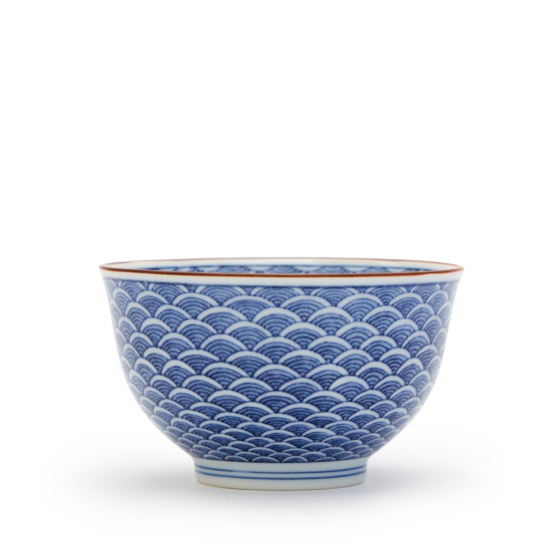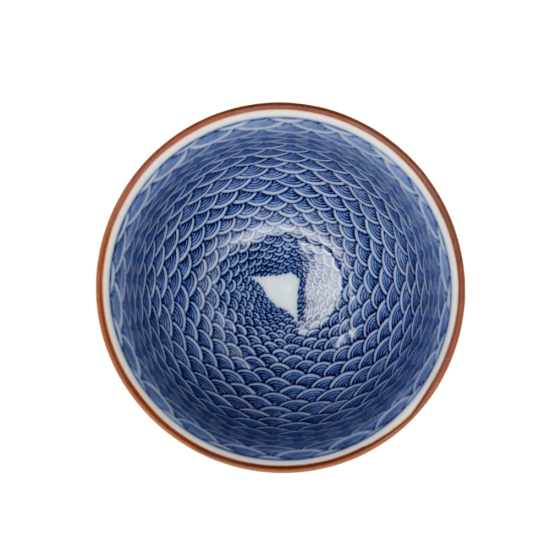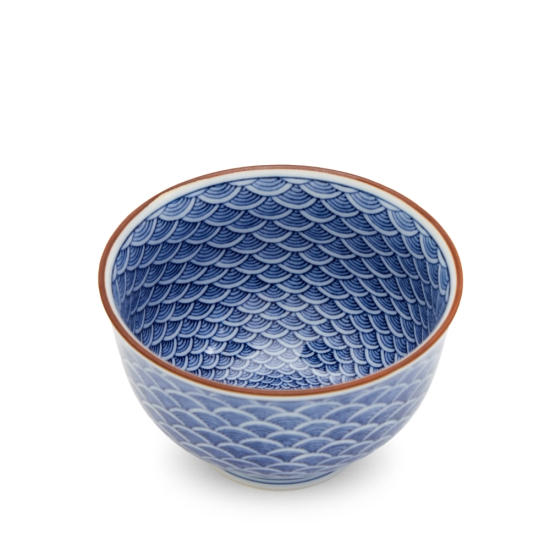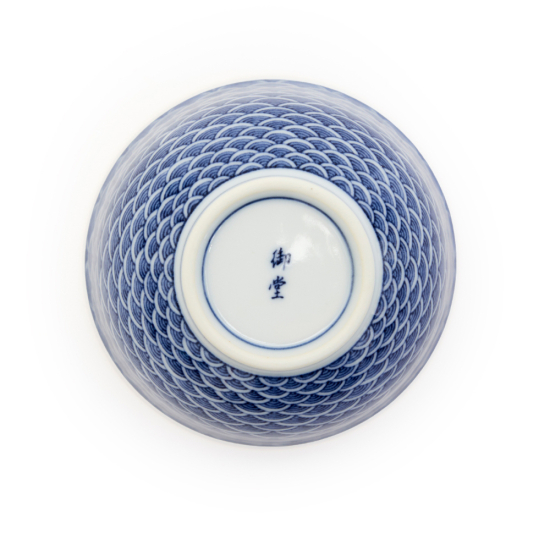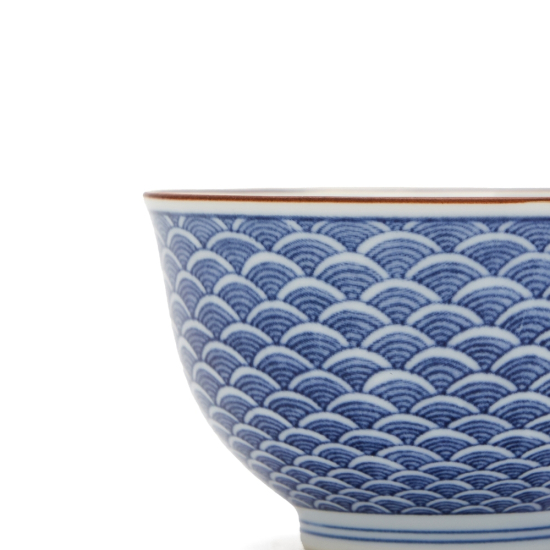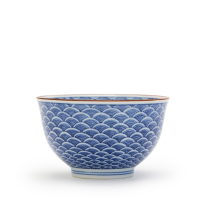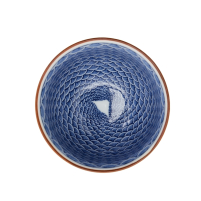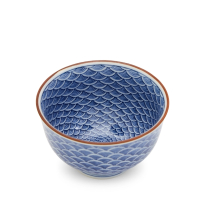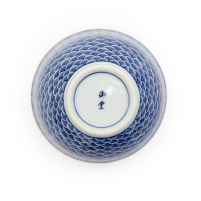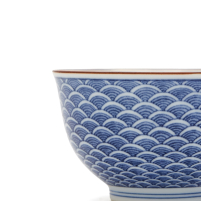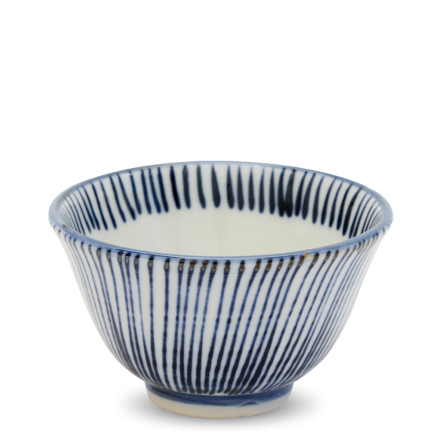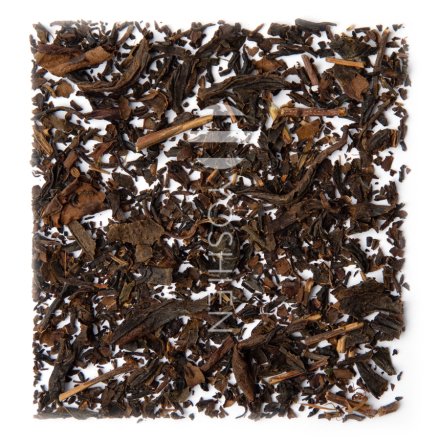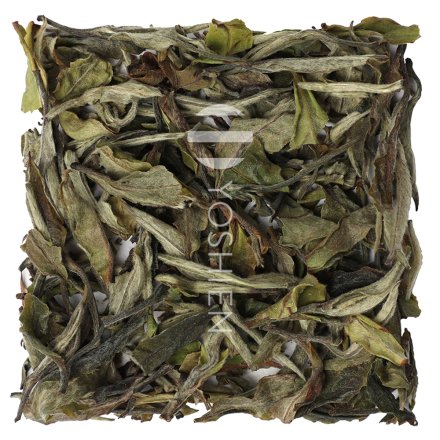Famous throughout Japan for its pottery, Arita is a small town in Saga prefecture on Kyushu, the southwesternmost of Japan’s main islands. Pottery from this area is broadly referred to as Arita-yaki and has a history that dates back to the 17th century following the Japanese invasions of Korea (Imjin War 1592-1598) when many highly skilled Korean potters were forcibly brought to Japan. One of these craftsmen discovered kaolin – the mineral required to make porcelain – in Arita, which consequently became the first place in Japan where porcelain was produced. Over the years many large kilns were built here, manufacturing pottery for the domestic as well as the Chinese and European markets where Arita wares were often known as Imari-yaki, after the name of the port from where they shipped. Various styles including blue and white Sometsuke porcelain, Kakiemon and Kutani wares fall under the Arita-yaki umbrella.
Sometsuke 染付け
Japanese blue-and-white pottery is known as Sometsuke, literally “dye applied”, because the colour was likened to traditional indigo-dyed linen. The ceramics are decorated by hand, stencil or transfer-print with a blue pigment, traditionally cobalt oxide, over which a transparent glaze is then applied. Once fired, the underglaze decorations become a vivid shade of blue. This method originated during China’s Song dynasty (960-1279) and is believed to have been perfected around the beginning of the Ming dynasty (1368-1644). Blue-and-white pottery was introduced to Japan at the start of the 17th century in the form of export Tianqi, or Ko-Sometsuke ("Old Sometsuke"), porcelain from Jingdezhen, which was imitated in the kilns at Arita before spreading to other areas including Kyoto, Seto, Hasami and Mikawachi, each developing their own unique variations of Sometsuke.



